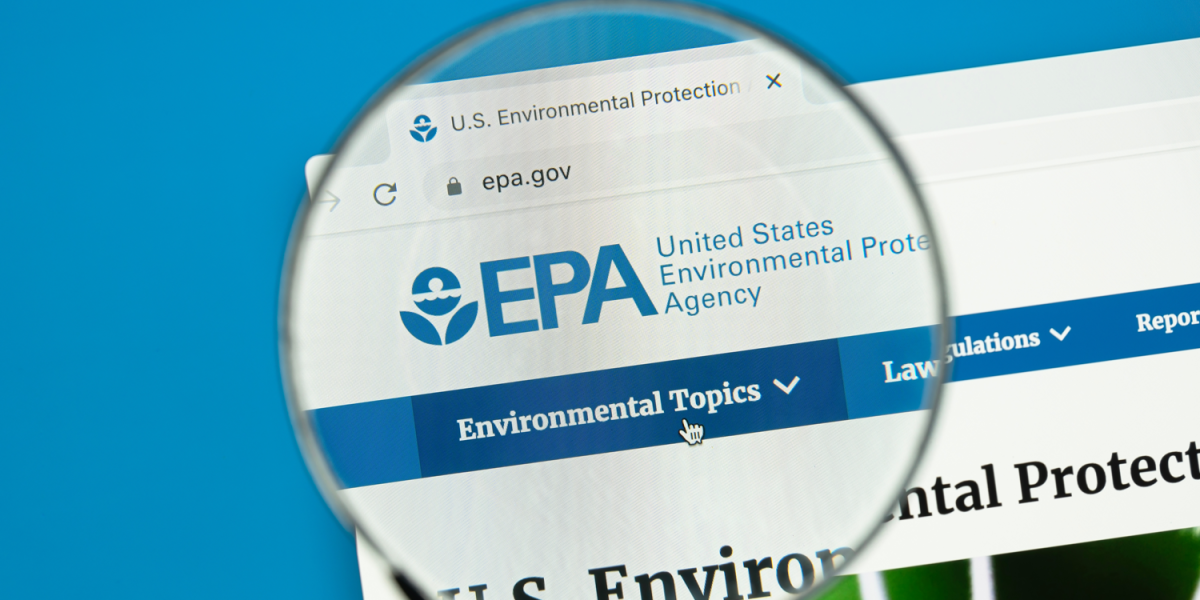You are here

(Editor's Note: 3E is expanding news coverage to provide customers with insights into topics that enable a safer, more sustainable world by protecting people, safeguarding products, and helping businesses grow. Q&A features our reporters' exclusive 1:1 interviews with regulatory and industry influencers.)
Regulations and recordkeeping standards for per- and polyfluoroalkyl substances (PFAS) reporting are constantly evolving. The recently finalized Toxic Substances Control Act (TSCA) 8(a)(7) PFAS rule requires companies that have manufactured (including imported) PFAS in any year since 1 January 2011 through 31 December 2022, to report information regarding PFAS uses, production volumes, disposal, exposures, and hazards. The data will allow the U.S. Environmental Protection Agency (EPA) to better characterize the sources, quantities, and end uses of PFAS. Since the rule impacts the manufacture and import of discrete manufactured goods as well as chemical products, the EPA has estimated that more than 130,000 companies may be subject to reporting.
3E News sat down with Terry Wells, Senior Manager, Regulatory Research for North America, 3E Co., to discuss the implications of new PFAS reporting regulations within TSCA 8(a)(7) across sectors. Before joining 3E, Terry spent 20 years in the chemical industry as a product safety and stewardship manager and has spent 30 years working with TSCA. Terry's educational background is in toxicology and environmental science.
Review
What are the consequences for manufacturers (including small players) who fail to report PFAS data to the EPA within the stipulated time frame?
TSCA penalties are some of the highest environmental fines. The EPA can assess penalties for failing to report information, not keeping records of the information for reporting, or failing to allow an inspection or respond to a request for information. TSCA Section 8 penalties typically are per chemical violation, so if you have several different PFAS or several different sites of manufacture or import, each missed report is calculated as a separate violation. Even a small company could be subject to fines in the range of several hundred thousand dollars for failure to report. And of course, knowing about a violation or [providing] false or misleading information could result in criminal penalties including jail time.
TSCA requires that you submit all known or reasonably ascertainable information. Even small companies who may not have maintained TSCA compliance information in the past need to make sure that they can demonstrate that they have made efforts to review all company records to determine if they have any evidence that PFAS was used and that they have made reasonable attempts to find out if PFAS was contained in the products they manufactured or imported by reaching out to suppliers and examining supplier records. Small companies are subject to the same penalties as large companies under TSCA, so it is important to document how they determined that reporting was or was not required, maintained records of this effort, promptly responded to any request for information from the EPA, and the efforts made to comply.
How does the EPA plan to use the information gathered from these reporting and record-keeping requirements to better characterize the sources and quantities of manufactured PFAS in the U.S.?
The EPA developed a strategic roadmap for managing PFAS. The roadmap contains three pillars to research, restrict, and remediate PFAS. In the research pillar, EPA has several data-gathering programs to make sure it has sufficient information about the number of PFAS substances, past and current uses, exposures, releases, disposal, toxicity data, and environmental monitoring. The TSCA 8(a)(7) PFAS rule will be an important piece to collect more information about which PFAS chemicals are used, how they are used, and how people may be exposed. This data will lay the foundation for the EPA to be able to conduct risk evaluations and eventually implement risk management rules.
It also may be the driver for manufacturers who are interested in identifying and replacing PFAS in their products to collect the information they need to identify PFAS in their supply chain.
What are some potential impacts of these requirements across different sectors (e.g., construction, manufacturing, retail)?
Retrospective reporting is always difficult when companies could not have anticipated that required information would be needed. Many discrete manufacturing industry and retail companies do not have or maintain full chemical data for current or past products, especially products manufactured more than 10 years ago. Since PFAS chemicals were not regulated in articles until recently, there would have been no need for downstream suppliers to disclose the presence of PFAS. Manufacturers of finished articles and retailers often have complex supply chains which stretch back through many companies before the company that introduces PFAS into a product is located.
How does the EPA ensure confidentiality for those that are listed in the TSCA confidential chemical inventory under 8(a)(7)?
The EPA allows companies to protect confidential business information in all TSCA submissions. The electronic submission forms contain boxes where you can indicate which information is confidential business information (CBI) and if checked, these boxes will trigger a series of questions that must be answered to substantiate the claim of confidentiality. You must also provide a copy of the data that you are claiming as CBI with the CBI removed by the EPA so that it can provide the information to the public. The EPA reviews all claims to keep chemical identity confidential and some claims for other information.
If the EPA does not believe you have adequately substantiated your claim for confidentiality, it will generally ask follow-up questions and expect a prompt response. If you have not adequately substantiated your claims or don't respond to a request for further information, the EPA will release the information.
The EPA does not allow companies to claim chemical identity as confidential business information if the chemical is publicly listed on the TSCA inventory, but you may still be able to claim the link between that chemical and your company, site, or personnel is confidential. The EPA also does not allow toxicity study data to be claimed confidential, but you can still claim any information about your company, sites, chemical manufacturing process, or other information in these reports as confidential business information to provide some protection for confidential information and potentially protect your data compensation rights.
Should the EPA adopt the Organization for Economic Co-operation and Development (OECD) definition for PFAS and what implications would that decision have broadly for the chemical regulation landscape were the EPA/OECD to align in this manner?
The EPA has been using a ‘‘fit for purpose’’ definition of PFAS in the rules it has developed under various programs. This approach ensures that the EPA meets the statutory requirements for each program and that it has the data to support the decisions. The PFAS definition used in the TSCA 8(a)(7) rule was developed to focus on substances most likely to be persistent in the environment while excluding those substances that are ‘‘lightly’’ fluorinated and therefore less likely to persist. Some critics have commented that many of the additional chemicals that might be covered under the OECD and not covered under the EPA definition may be pesticides and pharmaceuticals, which could lead to human exposure and environmental contamination. However, both pesticides and pharmaceuticals already have robust data collection and risk assessment programs, so the information collected under TSCA is unlikely to yield new insights.
Analysis
The EPA’s roadmap for managing PFAS is three-pronged. It focuses on researching, restricting, and remediating PFAS. As a result, many smaller companies that have not devoted regulatory resources or personnel to record-keeping will need to adapt to comply with the new TSCA 8(a)(7) rule. They will also be incentivized to better track and identify PFAS across their supply chain. In summary, the TSCA 8(a)(7) PFAS rule has the following impacts:
• The TSCA 8(a)(7) PFAS rule will be an important piece to collect more information about which PFAS chemicals are used, how they are used, and how people may be exposed.
• This data will lay the foundation for the EPA to be able to conduct risk evaluations and eventually implement risk management rules.
• Small companies can also be subject to TSCA Section 8 fines or penalties.
• The EPA does allow for companies to protect confidential information and compensation rights.

About the author: Stefan Modrich is a Washington, D.C.-based reporter for 3E. He covers the latest developments in environmental health and safety policy and regulation. Modrich previously wrote for S&P Global Market Intelligence, The Arizona Republic and Chicago Tribune. He is an alumnus of Arizona State University and the University of Zagreb.
Let 3E help your business and team stay up-to-date on the latest breaking news in product compliance with our regulatory monitoring service, 3E Monitor.

 Top
Top